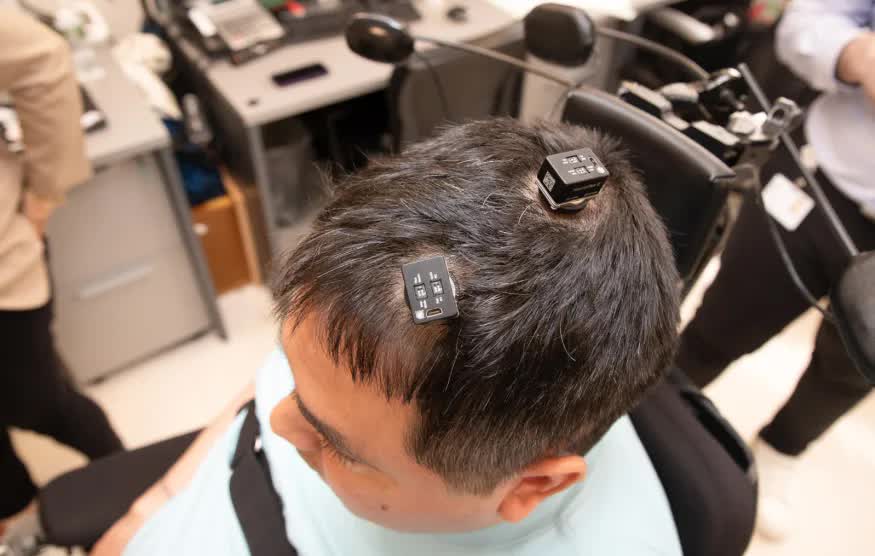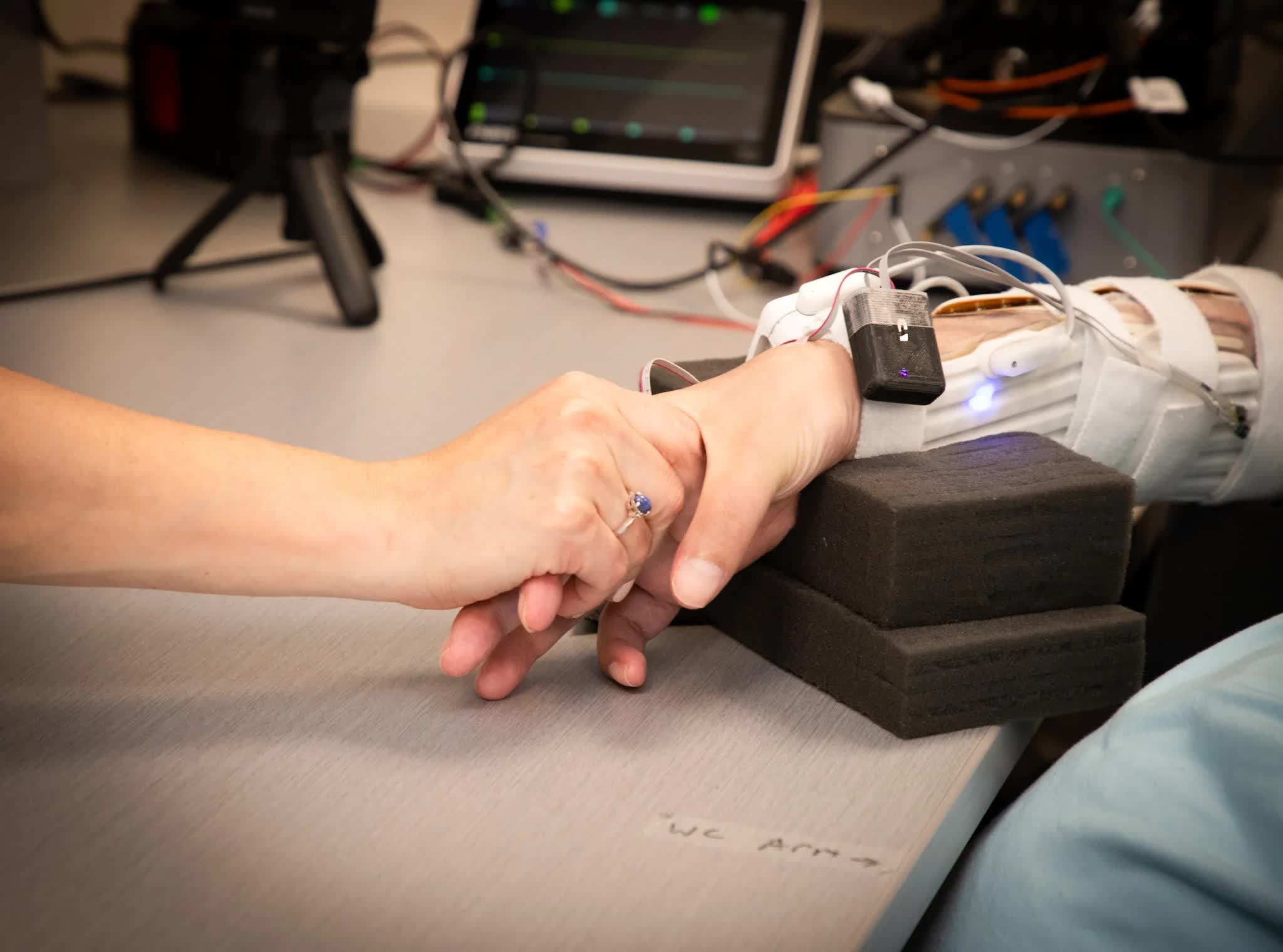In brief: While artificial intelligence has the potential to cause societal harm, it's easy to forget that the technology can also do a lot of good. One example of the latter is the case of Keith Thomas, a paralyzed man who has regained feeling and movement through the help of an AI chip implanted into his brain.
New York resident Thomas was involved in a diving accident on July 18, 2020, that injured his spine's C4 and C5 vertebrae, resulting in a total loss of movement and feeling from his chest down. However, thanks to a first-of-its-kind clinical trial, the 45-year-old is regaining some of those sensations. He's been able to move his arm at will and feel his sister hold his hand, thanks to AI-enabled chips implanted into his brain.
More than a year after his accident, Thomas was approached by the Feinstein Institutes for Medical Research to take part in a study that could help restore some functions and sensations by re-routing signals from his brain.
The process involved spending months mapping Thomas' brain with MRIs to locate the exact regions responsible for arm movement and the hands' sensation to touch. That was followed by a 15-hour operation - some of which Thomas was awake for - four months ago to implant the chips. Two were for movement, and three were placed in the area responsible for controlling touch and feeling in his fingers.
In addition to implanting the chips, external ports were installed on the top of Thomas' head. These allow researchers to connect the chips to a computer running AI algorithms that can interpret brain activity and turn it into physical activity.
This "thought-driven therapy" works by Thomas simply thinking about moving his hand. The implants send these signals to the computer, which interprets them and sends signals to the non-invasive electrodes positioned over his spine and forearm muscles to stimulate movement.
As for feeling touch, sensors placed on his fingertips and palms transmit pressure and data to the region of his brain responsible for sensation.
While the system requires Thomas to be linked to the computer, researchers say he has been showing signs of recovery even when the machine is switched off. His arm strength is said to have more than doubled, while he is feeling some new sensations in his forearm and wrist. It's hoped that more movement and sense of touch will return as Thomas keeps using the therapy, and that the technology will be able to help the more than 100 million people who live with some form of paralysis or impaired movement.
"There was a time that I didn't know if I was even going to live, or if I wanted to, frankly. And now, I can feel the touch of someone holding my hand. It's overwhelming," Thomas said. " [...] if this can help someone even more than it's helped me somewhere down the line, it's all worth it."

